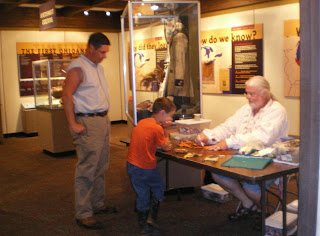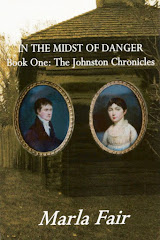
John Johnston was a prolific man. He was well known for his excellent handwriting and keen mind, for his involvement in politics, for his strong sense of justice and caring work with Native Americans. He was also a leader in the Episcopalian church, a member of the Free and Accepted Order of Masons, and an innovative farmer. But he was prolific in one thing more than in any other -
And that was in having children!
John Johnston and his wife, Rachel Hoping Robinson Johnston were married for 38 years. During that time they had 15 children, and there was not one set of twins or triplets among them. They were born from 1803 to 1830. That averages out to one new baby approximately every eighteen months for nearly 30 years! Though such an accomplishment is not unheard of today (look at the so-called Octo-mom), in the Johnstons' time it was done without benefit of fertility drugs and was, in reality, somewhat commonplace. What was uncommon was that fourteen out of the fifteen Johnston children lived to adulthood. The average at the time was that one-half of a family's children would die under the age of six. With the exception of one small girl who died while the family lived at Fort Wayne in the Indian Territory, all of the Johnston children lived to reach maturity.
Among the Johnstons' boys were officers of the army and navy, a farmer, several merchants and an artist. Their girls were mothers and matriarchs of well-established families. While some never left Ohio, the other children’s lives took them to such far flung places as California, Japan and Russia. Their eldest son Stephen traveled over 30,000 miles to the China sea, while their second son, Abraham Robinson, took part in one of the longest marches ever undertaken by the US Army, traveling on horseback and foot approximately 2000 miles from Fort Leavenworth, Kansas to a point near present day San Diego, CA.
Over the next few months a series exploring the lives of each of the Johnston children will post to the blog. As author, I will look at each child in turn, going from eldest to youngest, employing quotes and photos where they are available. The story of the Johnston children is the story of America in her 'teens'. The American Revolution is over. The Civil War is decades away. What America is concerned with is learning how to stand on her own feet and walk proudly into adulthood.
Just like the Johnston kids.
Coming soon: Stephen Johnston, 1803-1848, Son of the Sea
Photos of John and Rachel Johnston are from the collection of the Ohio Historical Society










